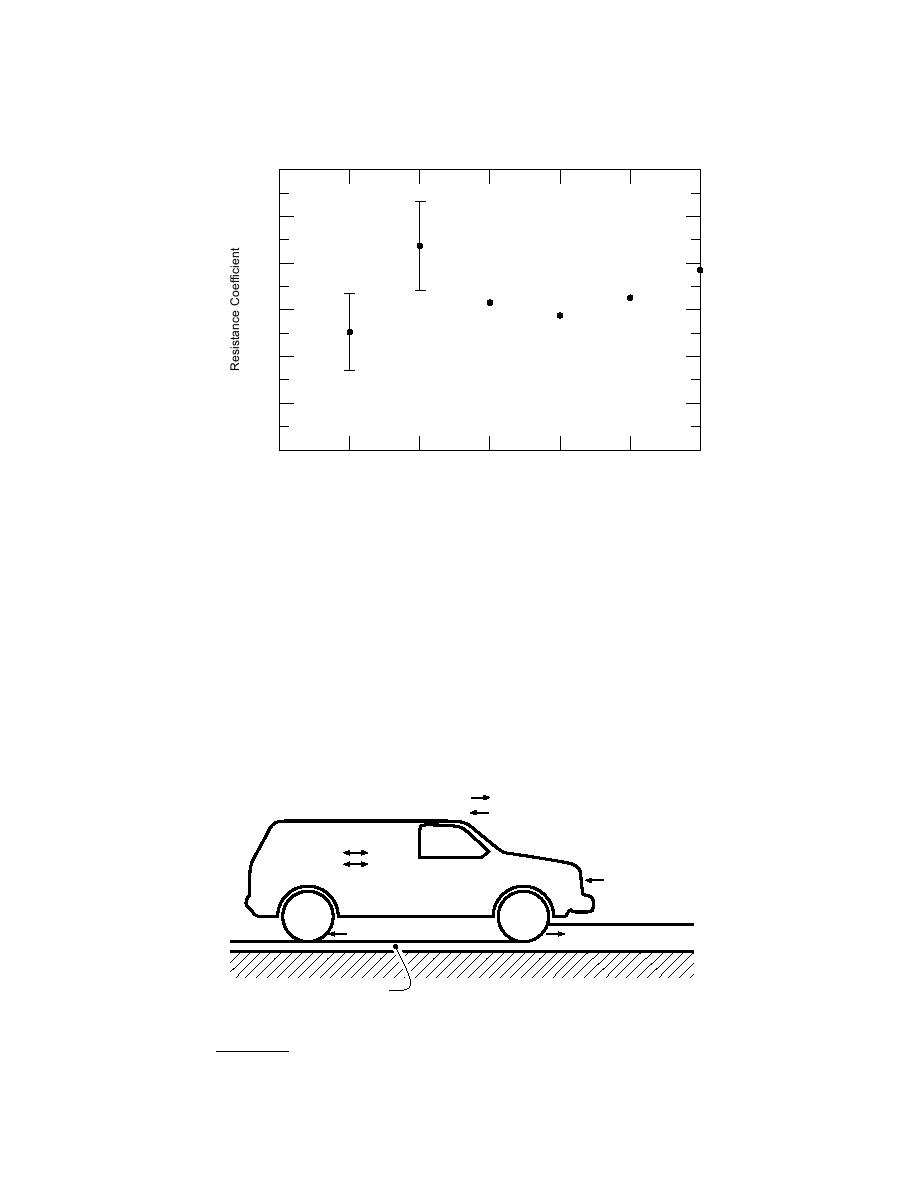
Source :
0125h - r
0125i - l
0125i - r
Blaisdell (1987)
0125h - l
Snow Depth (cm) :
7
16
32
32
34
34
Snow Density (Mg/m 3) : 0.257
0.100
0.160
0.160
0.160
0.160
0.12
0.10
0.08
0.06
0.04
0.02
0
Figure 9. Comparison of values measured by Blaisdell (1987) and those obtained here for
trailing tire resistance behind a driven wheel. Blaisdell's data are shown 1 standard
deviation.
of the sum of the load cell output, reading by
vehicle sinkage was about 28 cm in the deep snow.
reading, and the corresponding velocity. It does
Table 6 is a summary of the forces on the CIV; hard
surface resistance was estimated using equations
not appear that momentum has an effect, since the
velocities are nearly steady, and the small varia-
developed by Shoop (1992) for the left and right
tions in velocity don't necessarily correspond to
front tires of the CIV based on velocity. Since no
changes in the sum of the forces on the vehicle.
data are available on the hard surface resistance of
The force exerted on the undercarriage is esti-
the rear CIV tires, it was assumed to be the same as
mated to be 734 and 770 N for tests 0125h and 0125i
the front. From Figure 10, the sum of the measured
respectively. It can be seen that, without including
forces should equal the force ascribable to the
the effect of the slope, the vehicle would have been
dragging undercarriage, if the momentum effect
immobilized. Using the information from tests
can be assumed to be zero (i.e., the vehicle is not
0215f and 0215g to obtain a value of resistance
accelerating or decelerating). Figure 11 gives plots
+ Forces
Forces
∆ Momentum
R (gravity)
R (undercarriage)
R (terrain, internal)
Net Traction
Snow
Compacted Snow Layer
Figure 10. Forces acting on CIV (front wheel drive). Net traction + R(terrain, internal)
+ R(gravity)* + ∆momentum + R(undercarriage) = 0.
*Horizontal component of gravitational force used when operating on a slope.
12



 Previous Page
Previous Page
